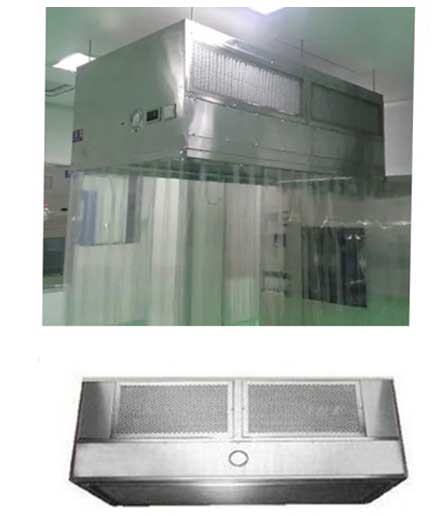
As industries and institutions focus on creating environments that prioritize cleanliness and hygiene, they are increasingly adopting advanced technologies. One standout innovation is the Ceiling Suspended Laminar Flow System, a highly effective solution for maintaining pristine air quality. In this blog, we’ll examine the importance of Ceiling Suspended Laminar Flow Systems and their impact across various sectors.
In the quest for superior indoor air quality and cleanliness, Ceiling Suspended Laminar Flow Systems have emerged as a key technology. These systems are crucial for maintaining pristine air conditions in various settings. This blog explores how Ceiling Suspended Laminar Flow Systems work and their impact across different sectors.
Ceiling Suspended Laminar Flow Systems create a controlled environment by directing a unidirectional, ultra-clean air flow from the ceiling to the floor. The core of their effectiveness lies in laminar airflow, where parallel streams of air move at the same speed and in the same direction. This design minimizes turbulence and prevents the mixing of clean and contaminated air.
Healthcare facilities greatly benefit from Ceiling Suspended Laminar Flows Systems. Operating rooms, laboratories, and cleanrooms rely on these systems to ensure a sterile environment. By reducing airborne contamination, they support critical procedures and experiments.
Research and development laboratories require stringent air quality controls to ensure experiment integrity. Ceiling Suspended Laminar Flow Systems create a micro-environment with optimal air quality, essential for industries like pharmaceuticals and biotechnology where even minor contamination can affect results.
Manufacturing industries such as semiconductors, electronics, and pharmaceuticals use cleanroom technology extensively. Ceiling Suspended Laminar Flows Systems help create ultra-clean spaces, reducing particle and contaminant presence and maintaining product quality and reliability.
Commercial spaces are increasingly adopting Ceiling Suspended Laminar Flows Systems to ensure clean, healthy air. Offices, retail spaces, and public buildings benefit from these systems by providing a safer and more comfortable environment for occupants.
Air Handling Units (AHUs) are equipped with filters to trap dust, pollen, and other airborne particles, ensuring the air is clean and safe. AHUs also manage temperature, humidity, and air distribution, contributing significantly to indoor air quality.
The role of AHUs in maintaining indoor air quality is crucial. By filtering and conditioning air continuously, they help eliminate pollutants, allergens, and microorganisms, creating a healthier indoor environment.
As sustainability gains focus, AHUs are evolving to be more energy-efficient. Features like variable speed drives, heat recovery systems, and advanced controls optimize energy use without compromising comfort.
Ceiling Suspended Laminar Flows Systems and AHUs are vital in creating clean, comfortable, and healthy indoor environments. Understanding their functions and advantages highlights their importance in modern building design and operation. As we move towards more sustainable practices, these technologies will continue to play a key role in shaping the future of indoor air quality.
For more details on PeterAir’s innovative air distribution solutions:
Phone: +91 8484 836 337 / +91 7350 336 337
Email: sales@peterairs.com
Website: https://peterairs.com
Elevate your environment with PeterAir’s precision-engineered air solutions!“